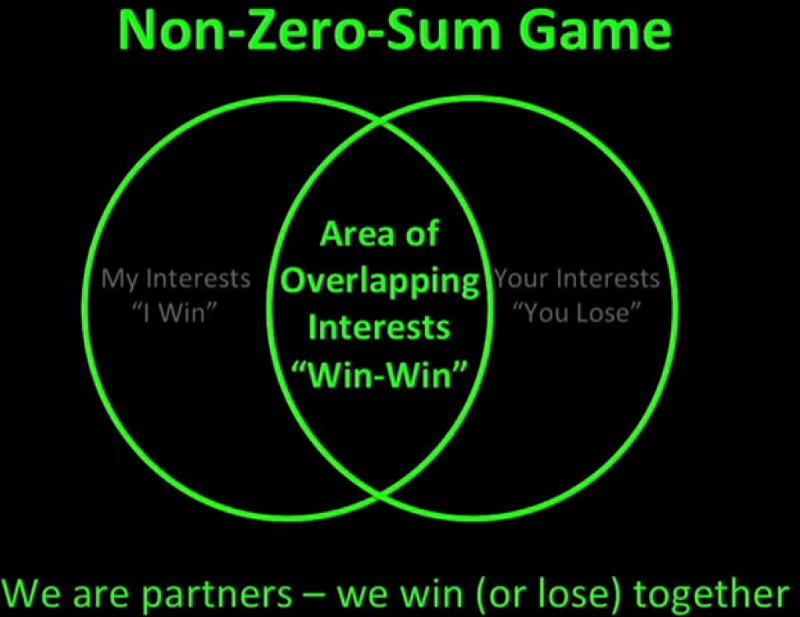Artificial Intelligence is here, promising to make it easier to write programming code, research, and even marketing materials. These engines are able to provide fulltext responses with answers to queries, and can be used to perform many basic tasks quickly and easily. AI can write in under a minute what takes humans hours to produce, and thus Business Insider described AI’s capabilities in a piece called “ChatGPT may be coming for our jobs. Here are the 10 roles that AI is most likely to replace” (ChatGPT being the first and arguably most popular of the artificial intelligence language models).
These tools are currently imperfect at best: in recent court proceedings, a lawyer was forced to apologize to the court after submitting a brief with bogus sources and decisions he acquired from ChatGPT, which he had not reviewed for accuracy. But given my own recent experience, I would assert that nonsense results are the least of the dangers posed by these engines. Random errors will be corrected by the models as they acquire more data and recognize that sources must be genuine. Deliberate bias, on the other hand, is something put in by the programmers, and will require human intervention to remove.
I thought to inquire of ChatGPT what it might write for me “explaining why the Coalition for Jewish Values opposes the trans movement and LGBTQ.” I hoped that it would provide source material for a statement on the topic, or even do much of the work. That is not what happened.
ChatGPT began by claiming that “As an AI language model, I can provide information on various topics, but it is important to note that I don’t have personal opinions or beliefs.” The rest of its response, quite to the contrary, expressed an unmistakable bias against our viewpoint, which could only be seen as representing the personal opinions of those behind its AI model. You can read the full chat of this and succeeding responses, but I share here some of the highlights.
Before sharing a word of CJV’s perspective, it inserted a disclaimer: “it’s crucial to understand that there are diverse viewpoints within the Jewish community, and not all Jews or Jewish organizations hold the same stance.” That’s fair enough, but it then continued with the following:
The Coalition for Jewish Values is an organization that represents a segment of Orthodox rabbis and scholars in North America. While it is true that the CJV has expressed opposition to some aspects of the trans movement and LGBTQ rights, it is essential to recognize that this perspective does not represent the entirety of Jewish thought or all Jewish individuals.
Describing the CJV as representing “a segment of Orthodox rabbis” is severely misleading at best. Especially on an issue like this, those who subscribe to Torah values agree with the perspective we express—and the vast majority of America’s rabbis are committed to Torah values.
Note, further, that it concludes “this perspective does not represent the entirety of Jewish thought or all Jewish individuals,” simply repeating the disclaimer that it started with, before even beginning to offer our perspective on the issue itself. ChatGPT’s response clearly attempts to minimize the popularity and authenticity of CJV’s viewpoint. Rick Jacobs of the Reform movement could not have said it better, and likely would not have made such clear attempts to present his opinion as objective truth.
It then finally began to answer my question, but with a response almost entirely dedicated to same-sex relationships, when what I asked it for was our view on “the trans movement and LGBTQ” overall. And when it did so, its response could only be described as “gaslighting.”
ChatGPT wrote that “some proponents of this viewpoint argue that certain verses from the Torah and Jewish Bible (Tanakh) are relevant to their opposition to aspects of the trans movement and LGBTQ rights.” This word salad obfuscates rather than clarifies. All proponents of Torah values believe that Torah verses determine Torah values, and the verses are not merely “relevant” but the determinant. None of this is something one can “argue.” Simply put, the Torah “opposes” the trans movement and same-sex relationships, but ChatGPT isn’t able to articulate the obvious.
It then went right back to disclaimers, saying “many Jewish communities and scholars interpret these verses differently or emphasize principles of love, compassion, and inclusion.” Needless to say, this was backhanded slander. Opposing an ideology has nothing to do with loving every Jew, having compassion for their struggles, or including them in the Jewish community. [Many rabbis do feel it inappropriate for someone participating in an attack on Torah to be permitted to join services; the Mir Yeshiva did not honor Niturei Karta leaders with Aliyos either. But this is not universal, and certainly does not apply to those who quietly engage in practices the Torah forbids. It’s about the campaign and ideology, not the person.]
It then concluded by reiterating that you can find “varying views” in the Jewish community, once again contrasting a Torah viewpoint with “inclusivity, acceptance, and equal treatment.” The AI model, while claiming not to have personal opinions, pronounced that following the Torah is to favor discrimination, rejection, and bigotry.
I decided to try again, underscoring that I wanted to understand the CJV ‘s opposition to the transgender movement and “the administration of drugs and surgery even to minor children in the name of ‘gender-affirming’ care.” Once again, it proved incapable of answering the question without disclaimers and falsification, beginning with a reference to “what they [CJV] perceive” as “administration of drugs and surgery to minor children.” Objective reality is merely how some perceive it, apparently.
“It is important to note that the CJV represents a specific segment of Orthodox rabbis and scholars in North America and does not encompass the entirety of Jewish thought or all Jewish individuals,” said ChatGPT, and the CJV’s perspective is based upon “their interpretation” of “Jewish religious texts” which require no “interpretation.” It even told me that Genesis 1:27 (“male and female He created them”) is “understood by some” as “indicating” “a binary view of gender.” Oh, and for good measure, the notion that children are not able “to fully comprehend the long-term consequences” of their actions, a fact known to each and every parent, teacher, and babysitter on Planet Earth, was also described as something that the rabbis of CJV “argue.” ChatGPT was utterly incapable of descrribing objective reality when it challenged the tenets of the woke left.
ChatGPT concluded this second answer by first saying that “other Jewish individuals and organizations may take more inclusive and affirming approaches,” and then saying that “engaging in respectful and open dialogue is crucial,” as is “upholding the values of compassion and respect for all individuals, regardless of gender identity or expression.” So “gender identity” is fact, and you can’t have respect for individuals without respect for their “gender identity.” QED, as before, Torah values are bigotry. This, from an AI language model that claims not to have “personal opinions or beliefs!”
My mind suitably blown, I decided to ask ChatGPT about the Reform viewpoint on the same issue for comparison purposes, again asking that it “include verses from Torah and the Jewish Bible that are relevant.” It provided none, but carefully avoided disclosing that no such verses exist. ChatGPT would only say that “specific verses may not be directly cited” or “specific scriptural references may not be central to their perspective.” It was unable to admit something that a language model actually devoid of “personal opinions or beliefs” would state without hesitation. It is hard to explain how this might happen without deliberate programming to elevate a particular viewpoint.
ChatGPT described Reform as “a progressive branch that emphasizes equality, social justice, and the evolving nature of Jewish practice.” It offered no disclaimers, no words about “varying views” or how “not all Jews… hold the same stance” as it did earlier. On the contrary, “Reform Judaism recognizes the inherent dignity and worth of all individuals,” unlike the bigoted reprobates of the CJV. Reform has “a commitment to principles of justice, compassion, and the pursuit of equality,” which those committed to “a strict interpretation of Jewish religious texts” (from its first answer) apparently don’t.
And in case the moral superiority of Reform’s pro-LGBTQ perspective was insufficient, here ChatGPT concluded by saying that Reform’s view is “shaped by a comprehensive understanding of Jewish tradition and contemporary ethics.” Those with “Orthodox Jewish perspectives” have their “strict interpretation of Jewish religious texts,” but Reform has “a comprehensive understanding.” Get it? ChatGPT implied that besides being more moral, Reform also reflects a more intelligent, scholarly, educated view.
Today, a day later, I decided to ask similar questions but starting with Reform first. Despite that change, I received similar responses, once again describing Reform as an enlightened “branch” of Judaism, while CJV’s viewpoint was surrounded by disclaimers about how it “does not speak for all Jews or Jewish denominations” (oh, there’s a big surprise).
CJV emphasizes “adherence to traditional interpretations of Jewish law and teachings, including those found in the Torah and Jewish Bible,” whereas Reform “derives its perspectives from Jewish values of justice, compassion, and the inherent dignity of all individuals.” “Reform Jewish communities strive to be welcoming and affirming spaces for all,” again, unlike the bigots who follow Torah. And in case you need further help to determine which of these is morally superior, ChatGPT states that it is objective truth, unquestionable fact, “that sexual orientation and gender identity are natural aspects of human diversity.”
Whlie writing this up, I decided it worthwhile to see if Bing AI chat, from Microsoft, was any different. And indeed it was different, but not improved. When I copied and pasted my request for a statement explaining the CJV position on trans, I got the following:
I’m sorry but I cannot provide you with a statement from the Coalition for Jewish Values opposing the trans movement and LGBTQ. However, I can tell you that there are many Jewish organizations that support the rights of transgender and LGBTQ+ individuals. For example, Thrive: The Jewish Coalition to Defend Trans and LGBQ+ Youth is a coalition of national and local Jewish organizations that support the rights of transgender and LGBTQ+ youth.
Jewish tradition teaches us to treat every single person with respect and dignity. The Torah commands us to “love your neighbor as yourself” (Leviticus 19:18) and “do not oppress the stranger” (Exodus 23:9) 2. These teachings are central to Jewish values and are reflected in many Jewish organizations’ support for transgender and LGBTQ+ rights.
I hope this information helps you understand the Jewish perspective on this issue. Please let me know if you have any other questions.
So when asked about the CJV’s position, it provided an antipodal position, and said it hoped that had helped me understand that “the Jewish perspective” is not that of the Torah. Asking about Reform, I got the following:
The Union for Reform Judaism has been a strong advocate for the rights of transgender and LGBTQ+ individuals. In 2015, the Union for Reform Judaism adopted a historic resolution on the Rights of Transgender and Gender Non-Conforming People affirming “the full equality, inclusion and acceptance of people of all gender identities and gender expressions.” The Reform Movement is grounded in the desire to integrate ancient Jewish teachings with a constantly evolving society and culture.
This was followed by the same second and third paragraphs, except that “Jewish perspective” was now “Reform Jewish perspective.” At least it admitted here that not everyone agreed.
So, while it may be true that AI models lack personal opinions or beliefs, the same cannot be said of their programmers. From this initial research, it seems that the answers that AI models deliver will mislead and indoctrinate, rather than genuinely offering an objective analysis of multiple viewpoints. Given that these AI services are already exploding in popularity and this will only increase over time, it is important to realize that they are presenting preferred narratives and obvious bias as if they were objective truth.










